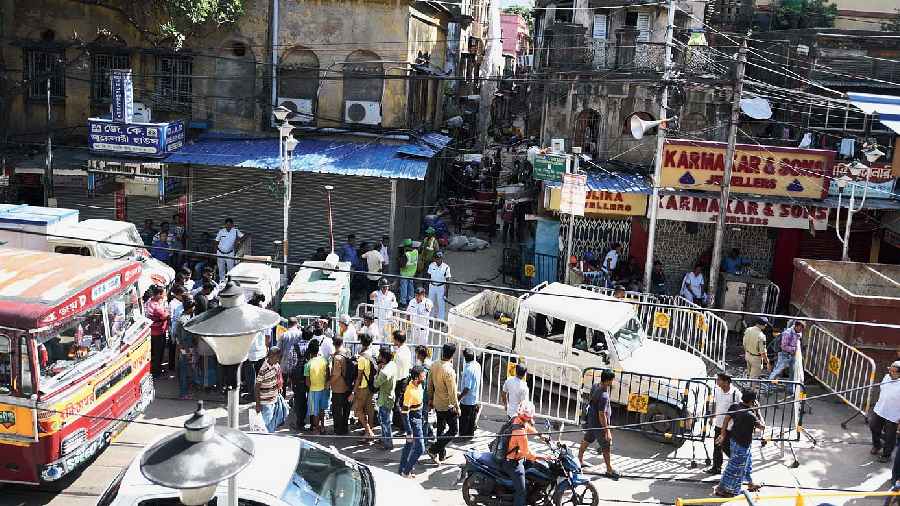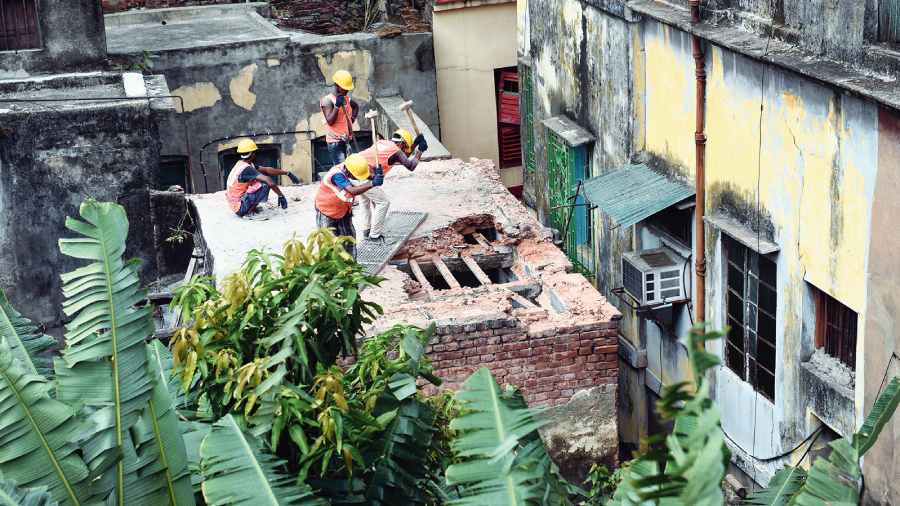A team of experts from Jadavpur University will re-visit the subsidence-hit zone in Bowbazar next week for an extensive assessment of the impact of the May 11 disaster.
Apart from the houses on Durga Pituri Lane that have developed cracks, the team will study the condition of several buildings on adjoining lanes, including Shyakrapara Lane, Gour De Lane and Hidaram Banerjee Lane before defining the exact spread of the subsidence and its impact.
Excavation of soil to grout a “blind spot” under the Howrah-bound tunnel of East-West Metro had led to leakage of underground water that in turn caused subsidence and cracks in at least nine buildings on May 11.
“We would be examining more houses this time to understand the impact of subsidence, the exact zone of subsidence and the intensity of the cracks in some of the buildings in the aftermath of twin disasters within a gap of nearly three years,” Ramendu Bikas Sahu of the civil engineering department of JU told The Telegraph.
Kolkata Municipal Corporation had engaged the JU team in the aftermath of the May 11 collapse. On May 24, it submitted a preliminary report identifying nine buildings as “severely damaged”. The report, however, did not mention anything about whether the buildings need to be demolished or they can be repaired and restored.
The JU team will check the houses where cracks surfaced both during this time and in 2019 and find out whether they were superficial or thorough. “Some of the houses that have been categorised as severely damaged in our preliminary report include those that were affected during the last subsidence and not just this time,” Sahu said. “So it is vital that we revisit some of the houses to assess their condition now.”
The JU team will not examine the condition of the soil in Bowbazar, its members said.
A team from IIT Roorkee, which visited the subsidence-zone on Sunday, has already sought for a sample of the underground soil in Bowbazar from the KMRC, the implementing agency of East-West Metro project.



